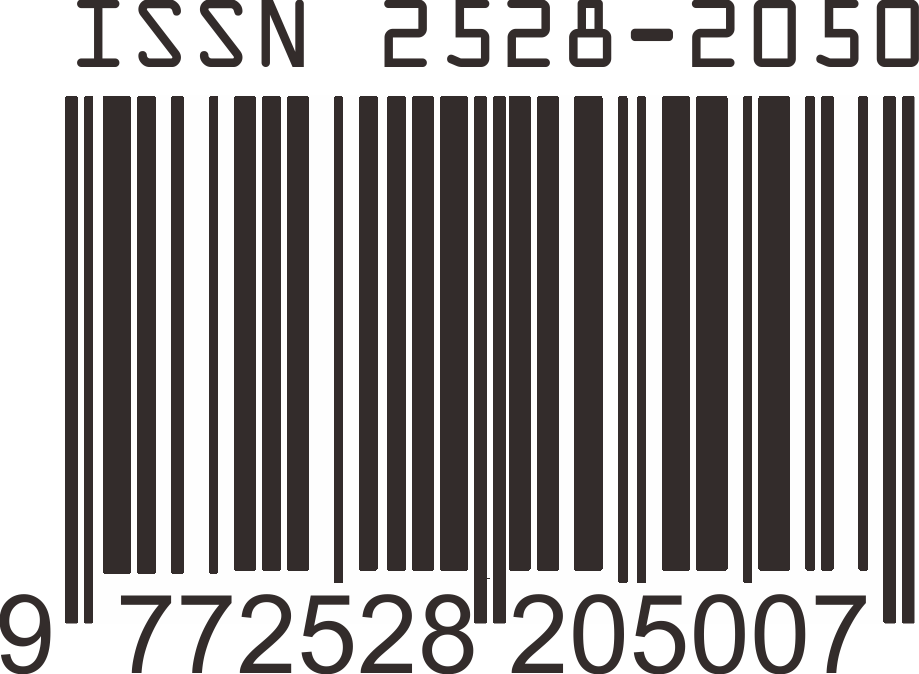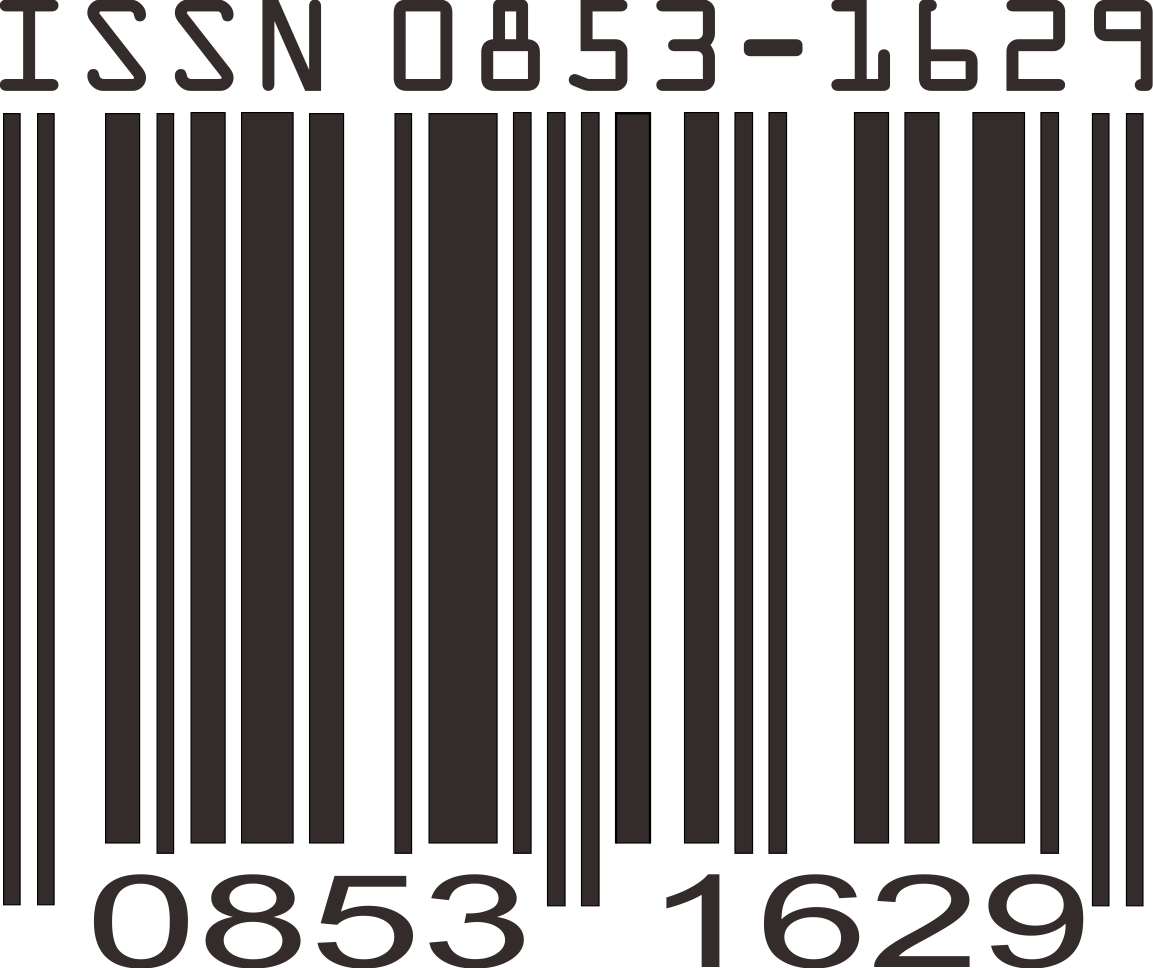Isolasi dan Identifikasi Kapang Saprofitik pada Sampel Tanah di Sekitar Kawasan Gunung Gamalama, Ternate
Abstrak
Kata Kunci
Teks Lengkap:
PDFReferensi
Alexopoulos, C.J., Mims, C.W. and Blackwell, M., 1996. Introductory mycology. 4th ed. John Wiley & Sons, Inc., Toronto.
Ando, K., Nakhashima, C., Park, J-Y., and Otoguro, M., 2003. Workshop on isolation methods of microbes. Biotechnology Center-NITE & Research and Development Center for Biotechnology-LIPI, Cibinong: 24--26 Juni 2003.
Anonim,, 2009. Kondisi geografis Pulau Ternate. www.damandiri.or.id/file/ ernesiscadewiibab5pdf. 24 November 2009. pk. 09. 35. WIB.
Barnett, H.L. and Hunter, B.B., 1998. Illustrated genera of imperfect fungi. 4th ed. APS Press, Minnesota.
Bills, G.F. and Polishook, J.D., 1994. Abundance and diversity of microfungi in leaf litter of lowland rain forest in Costa Rica. Mycologia. 86(2), 187--198.
Cromack, K. and Caldwell, B.A., 1992. The role of fungi in litter decomposition and nutrient cycling. In: Carroll, J.C. and D.T. Wicklow (eds.). The Fungal Community: Its Organizations and Role in the Ecosystems. 2nd ed. Marcel Dekker, New York.
Domsch, K.H., Gams, W. and Anderson, T.H., 1980. Compendium of soil fungi. Vol 1. Academic Press, London.
Dutton, M.V. and Evans, C.S., 1996. Oxalate production by fungi: Its role in pathogenicity and ecology in the soil environment. Canadian Journals of Microbiology. 42, 881--895.
Ellis, M.B. 1971. Dematiaceous hyphomycetes. Commonwealth Mycological Institute, Kew Surrey.
Gandjar, I., Samson, R.A., van den Tweel-Vermeulen, K., Oetari, A. dan Santoso, I., 1999. Pengenalan kapang tropik umum. Yayasan Obor Indonesia, Jakarta.
Green, F., Larsen, M.J., Winandy, J.E. and Highley, T.L., 1991. The role of oxalic acid in incipient brown-rot decay. Material und Organismen. 26(3), 191-213.
Horton, T.R. and Burns, T.D., 2001. The molecular revolution in ectomycorrhizal ecology: Peeking into the black box. Molecular Ecology. 52, 577--586.
Ilyas, M., Rahmansyah, M. dan Kanti, A., 2006. Seri panduan: Teknik isolasi fungi. LIPI-Press, Jakarta.
Kader, A.J., Omar, O. and Feng, L.S., 1999. Isolation of cellulolytic fungi from the Bario highland, Sarawak. ASEAN Review of Biodiversity and Environmental Conservation.
Kuter, G.A., 1986. Microfungal populations associated with the decomposition of sugar maple leaf litter. Mycologia. 78, 114--126.
Lodge, D.J., 1997. Factors related to diversity of decomposer fungi in tropical rain forests. Biodiversity and Conservation. 6, 681--688.
Lynd, L.R., Weimer, P.J., van Zyl, W.H. and Pretorius, I.S., 2002. Microbial cellulose utilization: Fundamentals and biotechnology. Microbiology and Molecular Biology Reviews. 66(3), 506--577.
Muhammad, S. and Amusa, N.A., 2003. In-vitro inhibition of growth of some seedling blight inducing pathogens by compost inhabiting microbes. African Journal of Biotechnology. 2(6): 161-164.
Munir, E., Hattori, T. and Shimada, M., 2002. A new glucose metabolism in wood-rotting fungi. Procceding of The 4th International Wood Science Symposium. Serpong, Indonesia 2-5 September 2002.LIPI-JSPS Core University Program In The Field of Wood Science. 336--340.
Peciulyte, D. 2007. Isolation of cellulolytic fungi from waste paper gradual recycling materials. Ekologija. 53(4), 11--18.
Samson, R.A., E.S. Hoekstra, J.C. Frisvad, and O. Filtenborg. 1995. Introduction to food borne fungi. 4th ed. Ponsen & Looyen, Baarn.
Singh, A. and Sharma, S., 2002. Composting of crop residue trought treatment with microorganisms and subsequent vermicomposting. Bioresource Technology. (85), 107--111.
Webster, J., 1980. Introduction to fungi. 2nd ed. Cambridge University Press, Melbourne.
Article Reads
Total: 3898 Abstrak: 651 PDF: 3247Article Metrics
Metrics powered by PLOS ALM
Refbacks
- Saat ini tidak ada refbacks.
Laman ini dikelola oleh:
Bio Publisher
The Faculty of Biology Publishing
Laman ini dikelola oleh:
Penerbitan Fakultas Biologi
Universitas Jenderal Soedirman
Jalan dr. Suparno 63 Grendeng
Purwokerto 53122
Telepon: +62-281-625865
Email: biologi@unsoed.ac.id
Laman ini menggunakan:
OJS | Open Journal System
Software pengelolaan jurnal ilmiah online. Versi yang digunakan adalah 2.4.8.0.
Metadata artikel terdaftar di:
Crossref
Agen resmi internasional pendaftaran Digital Object Identifier (DOI)
Artikel jurnal ini terindeks:









